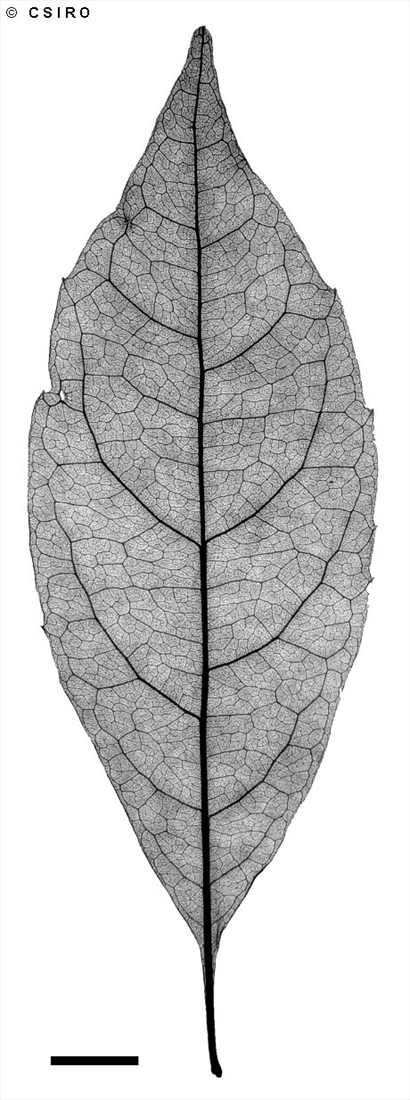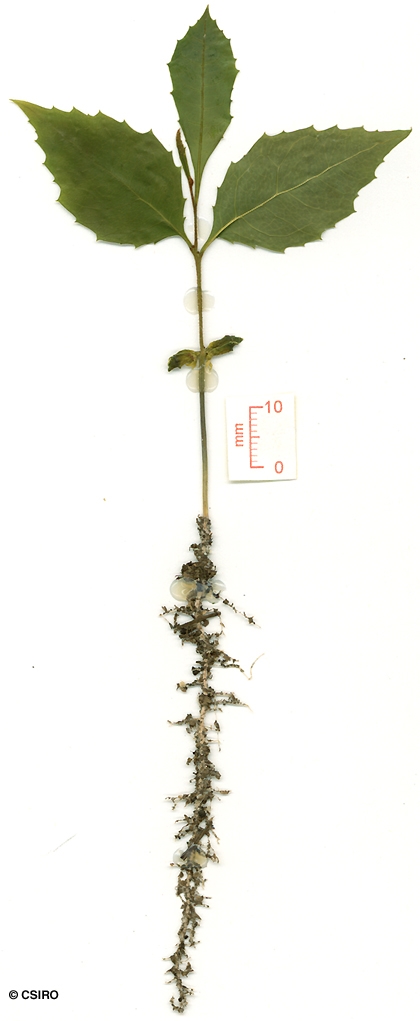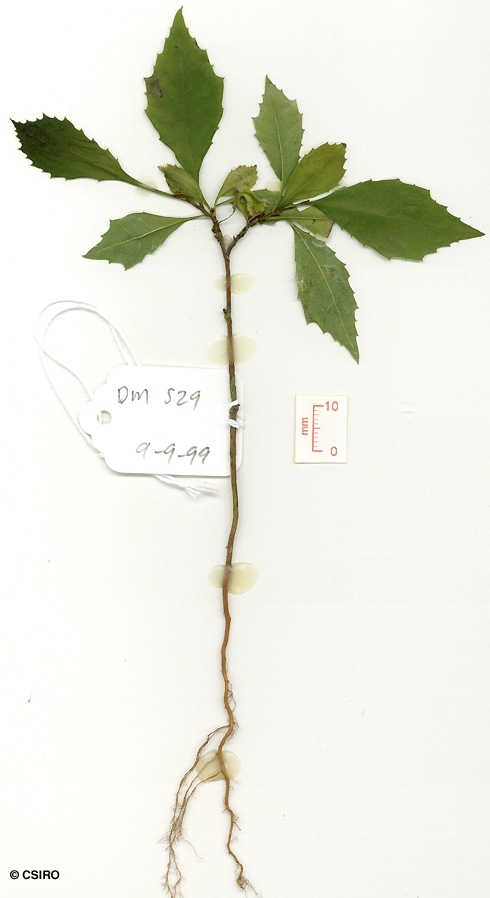Australian Tropical Rainforest Plants - Online edition
Helicia blakei Foreman







Foreman, D.B. (1983) Brunonia 6(1): 66. Type: Boonjee, Near Malanda, Queensland, S.T. Blake 15226, 29.vii.1943 (holotypus BRI, isotypus MEL).
Blake's Silky Oak; Oak, Blake's Silky
Seldom exceeding 30 cm dbh. Oak grain in the wood and a corresponding pattern in the blaze.
Tepals 15-17 mm long, ferruginous-pilose. Ovary glabrous. Ovules 2.
Cotyledons fleshy, about 6-12 x 3-8 mm, apex acute sometimes +/- lobed, base sagittate, petiole very short. First pair of leaves elliptic, margin serrate. Stem and terminal bud clothed in rusty brown hairs. At the tenth leaf stage: leaf blade elliptic to obovate, apex acuminate to acute, base attenuate, margin with 4-11 coarse teeth on each side. Both the upper and lower surfaces clothed in rusty brown, medifixed hairs with arms of radically different lengths. Stems and petioles clothed in similar hairs. Lateral veins usually forming loops inside the blade margin. Seed germination time 17 to 33 days.
Endemic to NEQ, known only from a few collections from Boonjee, the Johnstone River Valley and perhaps Thornton Peak. Altitudinal range from 160-1250 m. Grows as an understory tree mainly in well developed upland rain forest.





